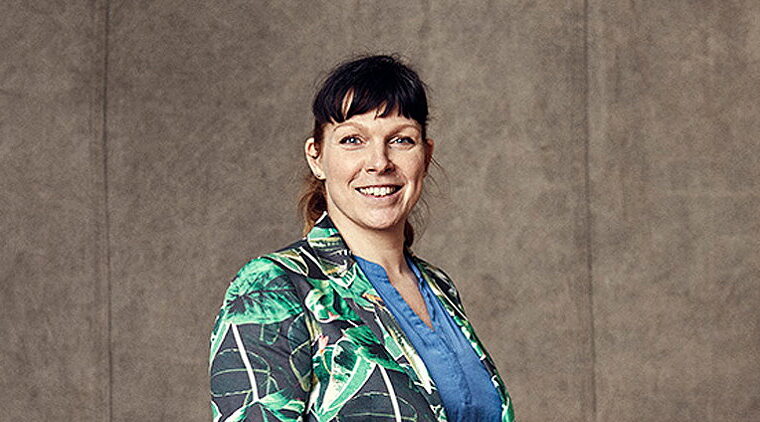Tell us about your connection with the smart textile industry.
Smart textiles and E-textiles first came to my attention through my scientific research. I teach university students about new technologies and innovations in the textile and fashion industry. I am encountering the concept of smart textiles also through consulting fashion start-ups about the possibilities they have – many emerging brands and young designers want to explore the options they might use for their future collections or new product lines dedicated to various target groups.
In which universities do you teach about smart textile technology?
Plekhanov University, one of the largest and most prominent economics universities in Eastern Europe, is the most recent place where I have spoken about how new technologies are changing the way we dress. There are various fashion schools in Italy, Serbia and the rest of the Balkan region, where I teach fashion design students about the ways in which the fashion industry is changing and the changes in the uses of textiles. Many students are interested in how they can make collections which are not classic fashion collections but have a different use and can cater to a different audience. New technologies are just expanding the field in which they can present their creative vision.
You teach university students about smart textile technology. Are there any case studies and trends?
New case studies and successful examples of electronic textiles are emerging every month. This makes me happy because these new ideas can help us aid older people, sportspeople, and people with special needs. There is a great example of a brand named Sensoree, which is a fabric producer; they have developed garments that change colour or display patterns in response to the wearer’s physiological or emotional state. These textiles offer creative opportunities for personal expression and communication, as well as potential applications in healthcare and therapy. Also, there is a case study of a company like CuteCircuit, which has created interactive garments that respond to music, enabling dancers and performers to wear clothing that visually enhances their shows. These textiles merge fashion and entertainment, making performances more visually captivating and immersive.
What is the difference between e-textiles and smart textiles?
Smart textiles are a subgroup of a wider group of textiles – electronic textiles or e-textiles. E-textiles are the materials that contain components which make them a part of an electronic system. These textiles used to be much bulkier, and the electronic parts were mostly visible and noticeable. Today, these filaments are woven into the textile yarns and are a part of the material, so the look and feel are like that of a traditional textile. The durability of these materials and the garments is excellent; they can be worn, washed and dried just like any other garment.
Smart textiles are e-textiles which give a specific experience or perform a specific task. They can be shape memory textiles, biometric monitoring textiles, pressure sensitive textiles, LED embedded fabrics, heating and cooling textiles, antimicrobial textiles… As you see, the list can go on.
What are smart textile materials, and what is their concept?
The concept of this technology is to provide additional functionalities that traditional textiles cannot. It is like textiles 2.0. These materials can sense, react and adapt to various environmental conditions or the inputs we give them.
In which sectors can electronic textiles make a significant impact? (health, climate change, etc.)
The first industry that comes to my mind is the healthcare industry. Some materials can communicate as a display, and they can aid people who are speech impaired. The signals from the brain can be connected to the fabric, and this way, the fabric acts as a display that can show the person’s emotions. Also, some textiles can sense whether bacteria are present on the skin surface and can act as smart bandages. We can use smart materials also in the sports and fitness industry and track and measure the results of any activity.
Some materials have motion sensors and can define what type of movement a person is doing, whether they are running, jumping or walking. Others can measure UV radiation and guard us from unnecessary health risks. With climate change, our garments will change, as well as how well they protect us. So, as you can see, there are many health and wellness issues e-textiles can solve, and there are more to come. This technology will just evolve.

Are you aware of any research or projects in this field?
Yes, there are many ongoing research projects and initiatives connected to the field of smart textiles all around the world. Researchers, universities, and institutions are actively exploring various aspects of smart textiles, including material development, applications, and technology integration. One of the most famous universities researching smart textiles is MIT – Massachusetts Institute of Technology in America. The idea behind most of the projects is, of course, to advance the capabilities and functionalities of smart textiles.
What is the future in this field?
As I mentioned previously, what we are seeing now is just the beginning of a whole new field of research and utilization of e-textiles. The future of smart textiles is promising, with ongoing advancements in health monitoring, environmental sensing, and sustainable materials. We can expect to see increased integration of these textiles in everyday life, with potential applications in healthcare, fashion, and even smart cities through how our clothes interact with the environment around us.
How can smart textiles sustainably come into the market?
I do not feel they will ever have a mass use like regular textiles and be utilized simply for their aesthetic functions and elements. So, if we want to see these textiles made sustainably and used for a longer period of time, I believe we will have to see a shift to harvesting energy for these materials through natural resources. This means that instead of a battery-powered garment, we will have garments that harvest energy from wind, rain and human movement. Of course, these sources of power will hopefully be integrated into the garments in a way that makes them visually appealing and fashionable as well.
What are the challenges this field is facing?
Just like with any new technology, we need to give smart textiles time to be adopted and put to use. Some users are still reluctant to try these textiles because of safety concerns. Also, if something is to be incorporated into a garment, we must do it without compromising comfort, durability and aesthetic standards. There is a question of data sharing and data protection as well – how are we going to protect the medical data and personal data of users? For me, ensuring this new technology is produced sustainably would be the biggest issue. How are we going to provide sustainable materials as well as sustainable manufacturing of smart textiles?
How are smart textiles used in fashion and luxury goods?
For now, fashion and luxury brands experiment with smart textiles through limited-edition collections or through collaborations with tech companies. Some examples of this are the Ralph Lauren “Heated Jacket” and “Polo Tech Shirt”, which measure biometric data during workouts. Gucci introduced its “The North Face x Gucci” collection, which featured smart jackets with built-in heating elements that could be controlled through a mobile app. The collection combined luxury fashion with outdoor technology. The luxury industry’s traditional players (brands) are usually shy when it comes to introducing new technologies in order to always cater to their target groups in the way they are used to. Nonetheless, some brands look into the future and don’t shy away from innovation.
As an expert in this field, I would like you to tell us what makes this field unique and what skills someone needs to start working in smart textiles.
The ideal mix for this type of rapidly evolving field would be knowledge about electrical engineering, material science and an understanding of fashion and textile design. It is challenging to have all three elements, so enthusiasm to learn is maybe crucial.



